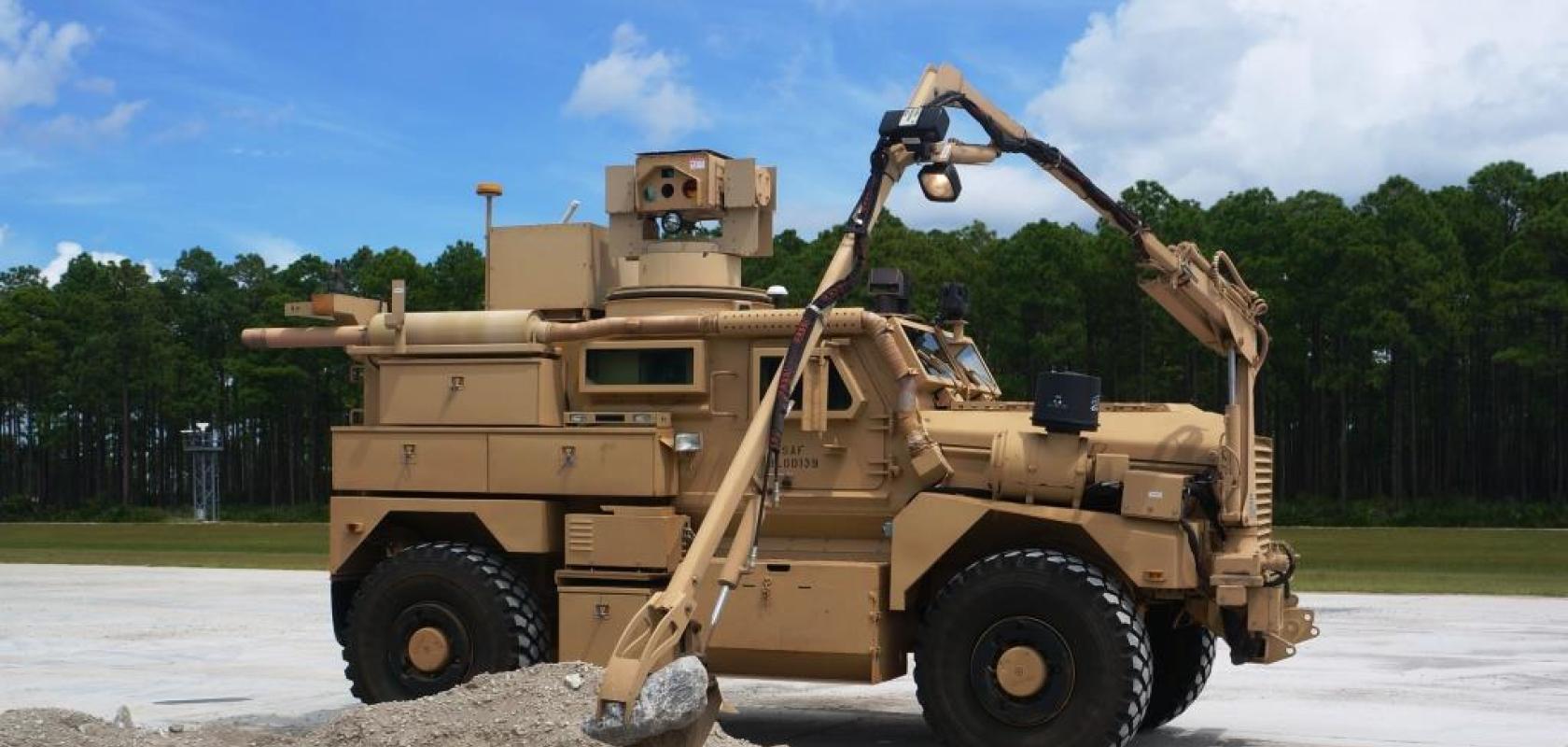Despite international efforts to prevent the use of landmines, they continue to be used, including in Ukraine. Unicef recently warned that around 30% of the country may be contaminated with mines and explosive weapons.
Often spread out over large areas in hidden and unpredictable places, landmines pose a danger long after conflicts are over. Being able to identify these hazards remotely is helping countries with war-depleted resources remove them more safely and efficiently.
Canadian company Draganfly recently supplied Ukraine with 40 drones equipped with hyperspectral cameras and mapping software to aid emergency response units and landmine clearing teams.
Draganfly builds drones and delivers training on how to use them, but partners with hyperspectral sensor manufacturers, such as Corning, to integrate hyperspectral technology with their devices. Offering a wider spectral range than multispectral cameras, hyperspectral line scanning sensors provide users extremely fine spectral resolution to target multiple, user-defined, narrow light bands.
To detect landmines in Ukraine, the drones use a magnetometer, or for plastic devices, a thermal sensor, where the temperatures are compared at different times of the day. Hyperspectral sensors are then used to observe other elements within a landscape that may hint to the placement of landmines or weapons – for example, foliage disturbances, or new paths or trenches.
Some of the flight operations can be automated, while more difficult terrain still demands manual input, according to the company. While the processing of data is automatic, the interpretation of data is still carried out entirely by humans. It is anticipated that advances in AI and software tools could lead to some of the interpretation being done by computers in the future, especially as minesweeping software gets better at distinguishing between mines and clutter over time.
Kevin Royle, founder of Fire Fighter Aid Ukraine, which will use the drones, said: “[Draganfly’s] drone technology can enable Ukraine first responders to safely navigate and plan their response in hazardous and hard-to-reach areas, ultimately enhancing their ability to effectively manage the challenging situation.”
Finding landmines with Raman spectroscopy
Raman spectroscopy has also been used in landmine detection thanks to its ability to discern the spectral signatures of explosives at a high sensitivity.
Engineers at Robert Gordon University in Scotland have explored the use of the technique to detect traces of explosives in soil, which could point to hidden landmines.
The Robert Gordon team focused on detecting minute amounts of nitroaromatics, which are associated with TNT-based explosives, in soil. These substances are often found in the ground near buried landmines, which have leached or leaked over time or if their casings are faulty. However, taking measurements from soil typically proves challenging as contaminants and other environmental factors can inhibit the detection of trace quantities.
The team analysed three types of samples – contaminated dry soil, contaminated wet soil, and contaminated water – to mimic environments where landmines could be found, such as dry land, deserts, and wetlands.
Raman spectroscopy was able to successfully identify nitroaromatics in each of the samples, with the water-contaminated samples giving the strongest signal and the dry land the weakest. This is due to the background signals generated by the soil, the researchers concluded, noting that further optimisation and elimination of those signals could make this technique effective in numerous environments – especially if complemented with lidar, laser-induced breakdown spectroscopy (LIBS) or other optical methods deployable on drones.
While optical sensors are proving crucial in detecting explosive devices, lasers are being used to destroy them. The US Air Force last year acquired several vehicles, known as Recovery of Airbase Denied By Ordnance (RADBO), that use lasers to detonate and clear unexploded ordnance such as bombs, grenades, improvised munitions or other explosives. Currently, the USAF is conducting ordnance characterisation, where they are evaluating how different devices detonate after being shot with the laser. The robotic arm or interrogator arm on the vehicle is another key feature. It will be used to move bombs and investigate craters or areas where an unexploded device may be located, but not visible.




